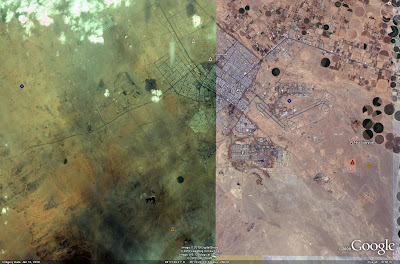Iraq: mythically overrated by the media, massively bombed twice. Syria, Libya, Iran, and the DPRK were all advised to take notice, given their reliance on the same supposedly mythical yet in reality old-technology weapon systems for air defense. Looks like Syria is learning the lesson that Iran thinks can be solved by welding together oil cans. Buk-M2E systems, Chinese JY-27 and Type 120 radars, and now, by 2014 apparently, some variant of the S-300. Most likely the S-300PMU-2, the current production export model of the P series, although I could make an argument for the S-300VM for added ATBM capability against Israeli weapons.
This is the Russian government enacting a new type of "missile diplomacy", wherein they deploy their own or supply modern system components to someone else to ensure that the West stays out of some given situation/gets a message/etc. And you know what? Can't blame them for it.
The last time I checked, the S-300P was not a Kalashnikov or shoulder-fired SAM, and therefore not on the UN Arms Control Register. Nor is it typically part of any sort of arms embargo, of which Syria is not under anyway. And, despite ridiculous Turkish theories, the weapon is not a credible surface-to-surface threat. So there is no reason for the sale not to proceed, unless of course the West really does have designs on entering Syria and sorting things out in the manner that it wants them sorted out.
And if the EU can decide it's OK to sell weapons to the anti-Assad crowd in Syria, they've got no real leg to stand on when Russia actually conducts a formal, legal transaction on the state-to-state level. Although in the EU's defense the idea of supporting a rebel force with light arms has never, ever blown up in anyone's face down the line.
Oh, wait...
If you ask me, this will either 1) force the West to run in half-cocked without taking the time to think things through and end up creating a bigger mess in the long run (which we arguably did in Iraq despite having said time to think about it first), or 2) make everyone back off while the situation, uh...basically solves itself.
Harsh? Yup. But look at it this way. Either the world wants/needs external actors to intervene in the internal affairs of states when things go awry, or it doesn't. That's the question: should we intervene because Assad is a bad guy? Should we stay out of it because it's a situation precipitated internally by internal forces? That's a whole different argument, which isn't the point here.
Or maybe Russia really does want us to intervene. Because if the West does eventually go in there after the missiles are operational, Almaz-Antey will be able to sell them for a billion dollars per unit with all of the publicity they're going to get. Or maybe this is all a really convoluted ploy to get Israel to bomb Syria again, claiming that sophisticated weapon systems that Hezbollah would not be able to operate or maintain in a million years are being...transferred to Hezbollah!
Really. Buk-M2Es for Hezbollah? That was the best argument they could come up with?
NEXT.
Now this is interesting. Saudi Arabia procured the DF-3A in the mid-80s, and signed the NPT in 1988 to assure the US government that no, they weren't trying to go nuclear (although allegations of Pakistani and Iraqi nukes were made for years). Now, with the Kingdom starting to be wary of Shi'a Iran's nuclear (alleged) ambitions, they might be reconsidering the world's most fatal mushrooms. And replacing the DF-3A as the potential launch platform.
The difference is that with the DF-3A, they had an inaccurate IRBM basically useful for nuclear warhead transport through the atmosphere. The DF-21 is far more accurate, terminally guided in some versions, making it useable as a conventional strike weapon where the DF-3A is really not.
The nuclear weapons acquisition is the best part of the story. If they go this route, then they're breaching the NPT, provided they don't withdraw first. If they don't withdraw, prepare for much hilarity as Iran and its supporters raise hell about the double standard. Because you don't really think we'd actually sanction the almighty oil supplier, do you?
For more on Saudi, the DF-3A, and associated information, my next JIR article will be on this very topic.
NEXT.
Iran has a stealth fighter
Yeah, I'm not linking to that. If you want a good laugh, go find the pictures yourself. But this is why nobody takes Iran seriously: they abuse the idea of deception to the point where all it does is make us laugh. Plus, their supposedly legitimate programs are also either 1) abused by deception, or 2) just hilarious. Remember the lawnmower engine powered "stealth" flying boat things? The photoshopped missile launch salvoes? The welded together oil cans allegedly holding SAMs inside? This one beat all of them.
Iran: demonstrating a lack of aerodynamics, LO design, and cockpit ergonomics all at the same time! Although, we really should've figured the first one out when their crowning aeronautical achievement was putting a second vertical fin on an F-5.
NEXT.
What I'm looking for this week:
-Where are Venezuela's S-300VM systems based? Their Pechoras?












